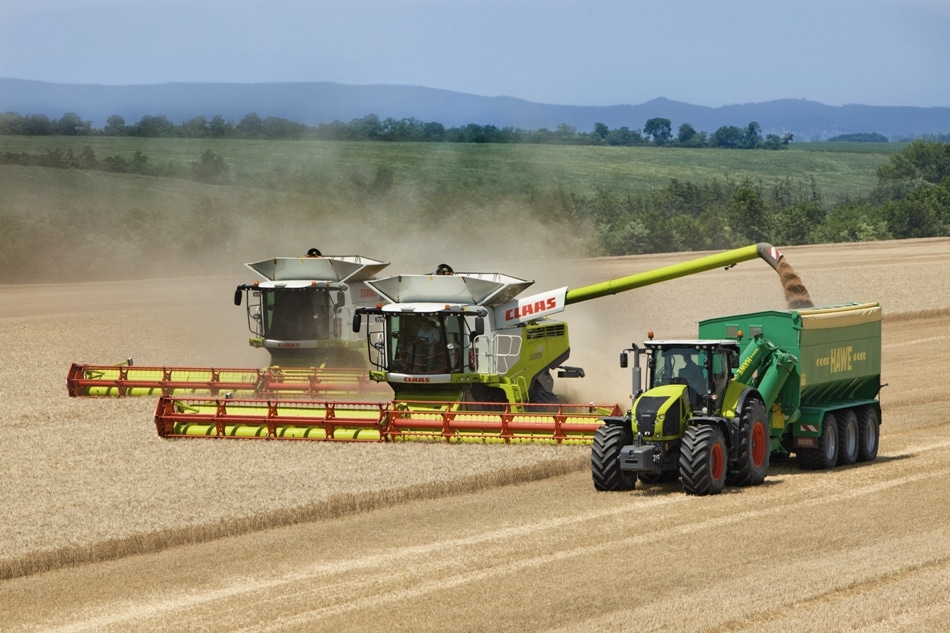Oct 30 2017
Tractors and combine harvesters are commonly operated on difficult terrain. Crops such as corn and canola grow at different densities; the field is at times muddy and is rocky occasionally; and plants often block the view of possible impediments.
In order to enable harvesting machinery to safely and efficiently harvest crops in spite of changing conditions, a new system for environment detection has been designed by Bielefeld University’s Cluster of Excellence Cognitive Interaction Technology (CITEC) and CLAAS, an agricultural machinery manufacturing corporation located in Harsewinkel, Germany. The collaborative project is being funded as a modernization project within its OWL technology network. On October 24, the results of the project were presented at a workshop in the CITEC Building.
 With the new system, harvesters automatically react to impediments in the field. Photo: CLAAS
With the new system, harvesters automatically react to impediments in the field. Photo: CLAAS
The goal of the project was to create a networked system with sensors that enables harvest machinery to automatically identify its surroundings and respond to variations. “In this way, the machines can adjust their operation based on the conditions of the field – both its state and the crops present,” says CITEC researcher Dr. Thorsten Jungeblut, who coordinates the project along with Dr. Boris Kettelhoit from CLAAS.
Harvest machinery operators are mostly only able to view a limited area around the machines. Plants further block what can be seen, and beyond this, the machines themselves restrict the view: harvest combines are occasionally as long as a truck.
“We therefore had to develop a system that ensures that collisions are prevented, for example with wild animals,”
Dr. Thorsten Jungeblut, Cognitronics and Sensor Systems research group at the Cluster of Excellence CITEC, Bielefeld University.
This group, headed by Professor Dr. Ulrich Rückert, conducts research on resource-efficient and micro-electronic systems, which are fitted with sensors such as infrared and color cameras, heat-detecting or distance sensors.
Between July 2014 and end of October 2017, the research group, along with CLAAS, built the intelligent sensor network for electronic environment detection in agricultural harvesting machines. CITEC researchers also provided algorithms that analyze sensor data of the project. “Sensor data is combined together and evaluated so that the machine can assess the environment on its own, enabling it to adjust to changing conditions,” explains Jungeblut. “In addition to this, the system works across different machines. For example, the control system in a combine harvester can warn a tractor of impending obstacles.”
This new system makes agricultural harvesting machinery more efficient and safer, thus increasing the quality of crop yields, damage to people and machines is prevented to the greatest extent possible, and stoppages are reduced.
Dr. Boris Kettelhoit, CLAAS.